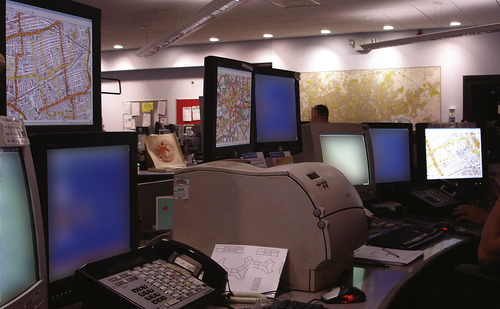CASE 20
 |
The following questions relate to the tasking and coordination of physician-led PHR teams (see also Case 39). Tasking and clinical coordination are crucial aspects of pre-hospital and retrieval medicine. Triage, resource allocation and high-level clinical oversight are key elements to this process.
The following incidents should be considered as being independant of each other. In each case, the decision to mobilise, coordinate and support the PHR team rests solely with you. You have information technology, maps and communications equipment available to you (see picture).
Incident A
The ambulance service has alerted you to an ongoing incident in an urban area of your region. Five minutes previously, multiple calls had been made to the Ambulance Service concerning a motorcyclist who had struck a car at an intersection. The information you have from a member of the public is that the motorcyclist is unconscious.
Incident B
A call is put through to you concerning a shooting incident in a remote village some 50 minutes rotary-wing flight time from the PHR service base. It is 2 am and raining. A single call was made by a female caller who reports a gunshot and a ‘figure lying face down in her garden’. A local ambulance crew has been tasked but will not be on scene for 15 minutes.
Incident C
Incident D
An ongoing incident has been brought to your attention. A car has been struck by a van on a motorway 25 minutes rotary-wing flight time from the PHR service base. Information is that one person is dead at the scene and another is trapped with severe abdominal pain and an SBP of 90 mmHg.
Question
20.1 Discuss key points in the allocation of physician-based PHR team resources to these incidents.
Discussion
Incident A
This sounds fairly straightforward and would justify the immediate activation of the PHR team. A few pointers suggest a significant incident has occurred:
• Multiple phone calls to the emergency services.
• Motorcyclist is involved suggesting significant mechanism.
• Loss of consciousness reported by passers by.
< div class='tao-gold-member'>
Only gold members can continue reading. Log In or Register to continue
Stay updated, free articles. Join our Telegram channel

Full access? Get Clinical Tree








